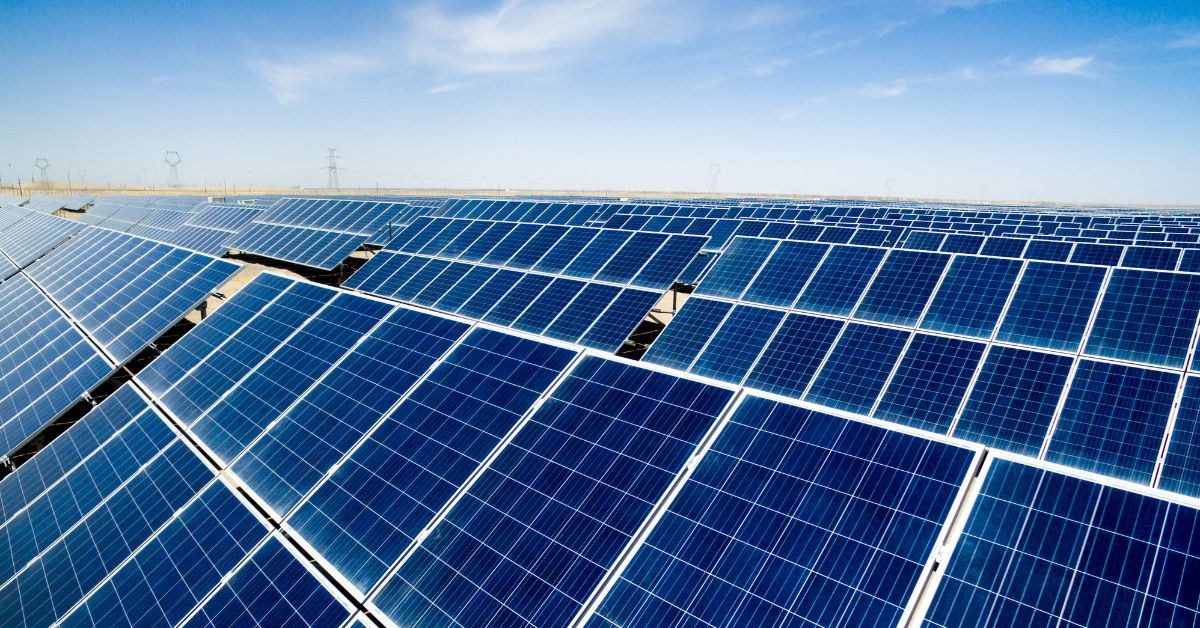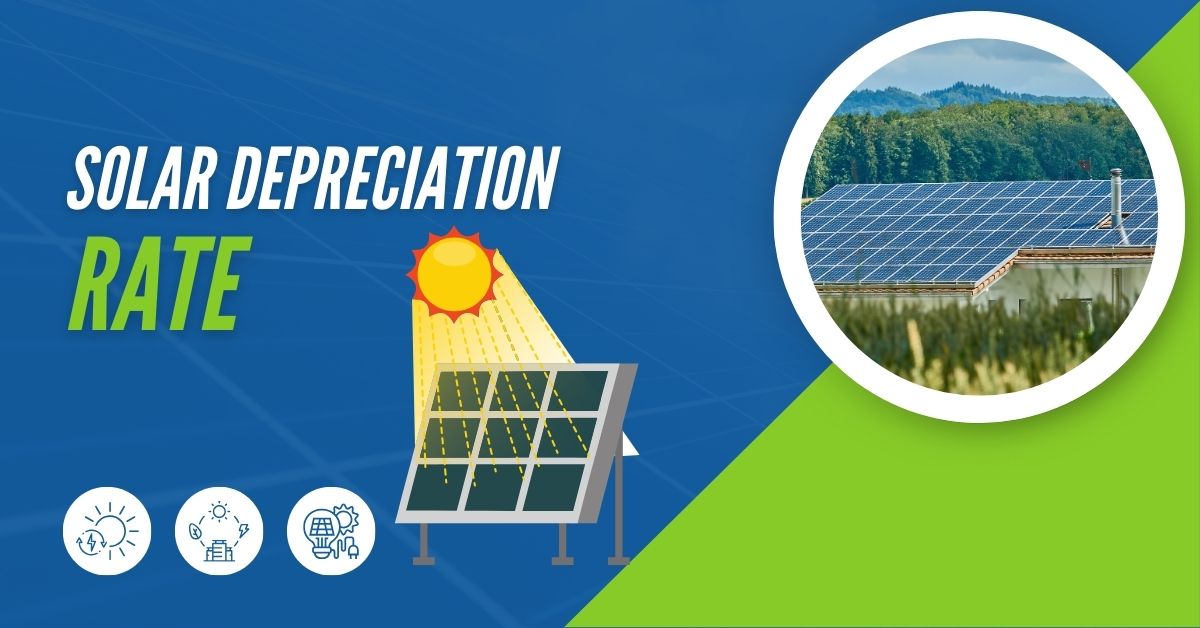Solar Depreciation Rate
This blog post provides a comprehensive overview of solar depreciation rates, blending technical details with practical advice to help readers make informed decisions about their solar investments.
Understanding Solar Depreciation Rates: Maximizing Returns on Your Solar Investment
Investing in solar energy is not just about reducing your carbon footprint—it’s also a financial decision with long-term implications. One critical aspect of this investment that often goes unnoticed is the concept of solar depreciation rates. In this blog post, we’ll dive into what solar depreciation rates are, how they impact the financial return on your solar energy systems, and what strategies can help maximize the benefits.
What is Solar Depreciation?
Solar depreciation refers to the decrease in the value of a solar energy system over time. Just like any other asset, solar panels and related equipment lose value due to wear and tear, technological advancements, and other factors. Understanding the depreciation rate of your solar system is crucial for calculating tax benefits, assessing long-term value, and planning future investments.
How Solar Depreciation Rates Work:
- MACRS (Modified Accelerated Cost Recovery System): In the United States, the most common method for calculating depreciation for solar energy systems is the MACRS. Under MACRS, solar systems are classified as five-year property, meaning you can depreciate the value of your system over five years. This accelerated depreciation schedule allows businesses to recover their investment quickly.
- Bonus Depreciation: As of recent tax reforms, businesses can also take advantage of bonus depreciation, allowing them to deduct a large percentage of the cost of the solar system in the first year it’s placed in service.

Factors Affecting Solar Depreciation Rates:
- System Quality: Higher-quality systems tend to have slower depreciation rates due to better durability and efficiency.
- Technological Advancements: Rapid improvements in solar technology can lead to faster depreciation rates for older systems.
- Usage and Maintenance: Proper maintenance can slow the depreciation rate by extending the system’s lifespan.
Financial Implications:
- Tax Benefits: Understanding depreciation rates can help you maximize tax deductions and reduce your overall tax liability.
- Return on Investment (ROI): The depreciation rate will impact your ROI calculations, helping you determine the true financial benefits of your solar investment.
- Resale Value: If you plan to sell your property, knowing the current value of your solar system after depreciation can aid in setting a fair price.
Strategies to Maximize Benefits:
- Regular Maintenance: Keeping your system in top shape can reduce the depreciation rate and extend its useful life.
- Upgrading Components: Replacing outdated components with more efficient ones can maintain or even increase the system’s value.
- Leverage Tax Incentives: Utilize all available tax incentives, including MACRS and bonus depreciation, to maximize financial returns.
1. Understanding Depreciation
What is Depreciation?
The Depreciation process of allocating the cost of a tangible asset over its useful life. It represents how much of the asset’s value is used up over time due to factors like wear and tear, age, or obsolescence. Businesses use depreciation to account for the reduction in value of assets like machinery, buildings, or vehicles, spreading the expense across the years the asset is in use. This helps in accurately reflecting the asset’s worth on financial statements and allows for tax deductions over the asset’s lifespan.

Importance of Depreciation
Depreciation plays a critical role in financial reporting and tax planning. It allows businesses to:
- Reflect the declining value of assets over time.
- Accurately represent the cost of using assets in revenue generation.
- Take advantage of tax deductions, reducing overall tax liabilities.
- Plan for future capital investments by accounting for asset replacement.
2. Solar Depreciation Rate: An Overview
What is Solar Depreciation?
Solar depreciation refers to the process of allocating the cost of a solar energy system over its useful life. The depreciation rate determines how much of the system’s cost can be written off as a tax deduction each year. This process is particularly important for businesses and individuals investing in solar energy, as it affects the project’s overall financial viability.
Why is Solar Depreciation Important?
Understanding solar depreciation is crucial for several reasons:
- Tax Benefits: Depreciation allows investors to reduce taxable income, leading to significant tax savings.
- ROI Calculation: Depreciation impacts the return on investment (ROI) of solar projects, influencing decisions about whether to invest in solar energy.
- Financial Planning: Depreciation helps businesses plan for the long-term costs associated with maintaining and replacing solar assets.
3. Depreciation Methods for Solar Assets
Modified Accelerated Cost Recovery System (MACRS)
The Modified Accelerated Cost Recovery System (MACRS) is the most commonly used depreciation method for solar energy systems in the United States. MACRS allows businesses to recover the cost of solar assets over a specified period through accelerated depreciation, meaning that a larger portion of the asset’s cost can be deducted in the earlier years of its life.
MACRS and Solar Energy
Under MACRS, solar energy systems are typically classified as five-year property, allowing the cost to be depreciated over five years. This accelerated depreciation schedule provides significant tax benefits in the early years of the solar project, improving the project’s overall financial return.
Example of MACRS Depreciation for Solar
Consider a business that invests $100,000 in a solar PV system. Using the MACRS method, the depreciation schedule might look like this:
- Year 1: 20% of the cost ($20,000)
- Year 2: 32% of the cost ($32,000)
- Year 3: 19.2% of the cost ($19,200)
- Year 4: 11.52% of the cost ($11,520)
- Year 5: 11.52% of the cost ($11,520)
- Year 6: 5.76% of the cost ($5,760)
The accelerated depreciation in the first few years significantly reduces taxable income, providing immediate tax savings.
Bonus Depreciation
In addition to MACRS, businesses investing in solar energy systems may also qualify for bonus depreciation. Bonus depreciation allows businesses to deduct a large percentage of the cost of the solar asset in the first year of operation.
History and Changes to Bonus Depreciation
Bonus depreciation has undergone several changes in recent years. The Tax of Cuts and Jobs Act of 2017 increased the bonus depreciation rate to 100% for qualifying property placed in service between September 27, 2017, and December 31, 2022. This means businesses could deduct the entire cost of a solar energy system in the first year. However, the bonus depreciation rate began to phase out after 2022, decreasing annually until it reaches 0% in 2027 unless further legislative changes occur.
Combining of MACRS and Bonus Depreciation
Businesses can combine MACRS with bonus depreciation for even greater tax benefits. For example, if a business qualifies for 100% bonus depreciation, it can deduct the entire cost of the solar system in the first year, and then apply the MACRS schedule to any remaining cost.
4. Tax Incentives and Solar Depreciation
Investment Tax Credit (ITC)
The Investment Tax Credit (ITC) is one of the most significant incentives available for solar energy investments. The ITC allows businesses and individuals to deduct a percentage of the cost of installing a solar energy system from their federal taxes.
Interaction Between ITC and Depreciation
The ITC interacts with solar depreciation in important ways. When calculating depreciation, businesses must reduce the depreciable basis of the solar system by half of the ITC value. For example, if the ITC is 26%, the depreciable basis is reduced by 13% of the system’s cost.
State and Local Incentives
In addition to federal incentives, many states and localities offer their incentives for solar energy investments, such as tax credits, rebates, and accelerated depreciation schedules. These incentives can further enhance the financial benefits of solar investments.
5. Factors Influencing Solar Depreciation Rates
Cost of Solar Energy Systems
The initial cost of the solar energy system directly impacts the depreciation rate. Higher-cost systems lead to larger depreciation deductions, while lower-cost systems result in smaller deductions.
Useful Life of the Solar System
The expected useful life of the solar energy system also influences the depreciation rate. While most solar systems are classified as five-year property under MACRS, the actual useful life may be longer, affecting the overall depreciation calculations.

Maintenance and Upgrades
Regular maintenance and potential upgrades to the solar system can impact depreciation. For example, if significant upgrades are made to the system, these costs may be capitalized and depreciated over time, altering the depreciation schedule.
6. Practical Examples of Solar Depreciation
Case Study: Commercial Solar Project
Consider a commercial business that invests $500,000 in a solar energy system. The system qualifies for both MACRS and a 26% ITC. Here’s how the depreciation might be calculated:
- Step 1: Calculate the ITC: 26% of $500,000 = $130,000 tax credit.
- Step 2: Reduce the depreciable basis: $500,000 – ($500,000 * 13%) = $435,000.
- Step 3: Apply MACRS Depreciation: Using the MACRS schedule over five years, the business can deduct a significant portion of the $435,000 over the first few years.
- Step 4: Consider Bonus Depreciation: If eligible, the business could potentially deduct the entire $435,000 in the first year using 100% bonus depreciation.
Case Study: Residential Solar Project
While residential solar projects don’t typically qualify for the same depreciation benefits as commercial projects, homeowners can still benefit from the ITC and other incentives. For example, a homeowner who invests $30,000 in a solar system could receive a 26% ITC, reducing the overall cost to $22,200. Though depreciation is not typically applicable to residential systems, the ITC and energy savings make solar a financially viable option.
7. Future Trends in Solar Depreciation
Legislative Changes
The future of solar depreciation will likely be influenced by changes in tax laws and energy policies. For example, extensions or modifications to the ITC, MACRS, or bonus depreciation could impact the financial attractiveness of solar investments.
Technological Advancements
As solar technology continues to improve, the cost of solar systems may decrease, potentially leading to changes in depreciation rates. Additionally, new types of solar assets, such as energy storage systems, may be subject to different depreciation rules.
Environmental and Social Factors
Increasing awareness of environmental sustainability and the social benefits of renewable energy may drive further incentives and policies supporting solar energy investments. These changes could enhance the financial benefits of solar depreciation.
Additional Resources:
- Link to IRS guidelines on MACRS and solar depreciation.
- Case studies on businesses that have successfully maximized solar investment returns.
- Tools for calculating depreciation and ROI for solar systems.
This blog post provides a comprehensive overview of solar depreciation rates, blending technical details with practical advice to help readers make informed decisions about their solar investments.
Understanding solar depreciation rates is essential for making informed decisions about solar energy investments. By taking advantage of tax incentives like MACRS, bonus depreciation, and the ITC, businesses and individuals can significantly reduce the cost of solar projects, improve ROI, and contribute to a more sustainable future.
Understanding and managing solar depreciation rates is essential for any solar investor. By taking advantage of tax benefits, maintaining your system, and staying informed about technological advancements, you can ensure that your solar investment yields the best possible financial return over its lifespan.

